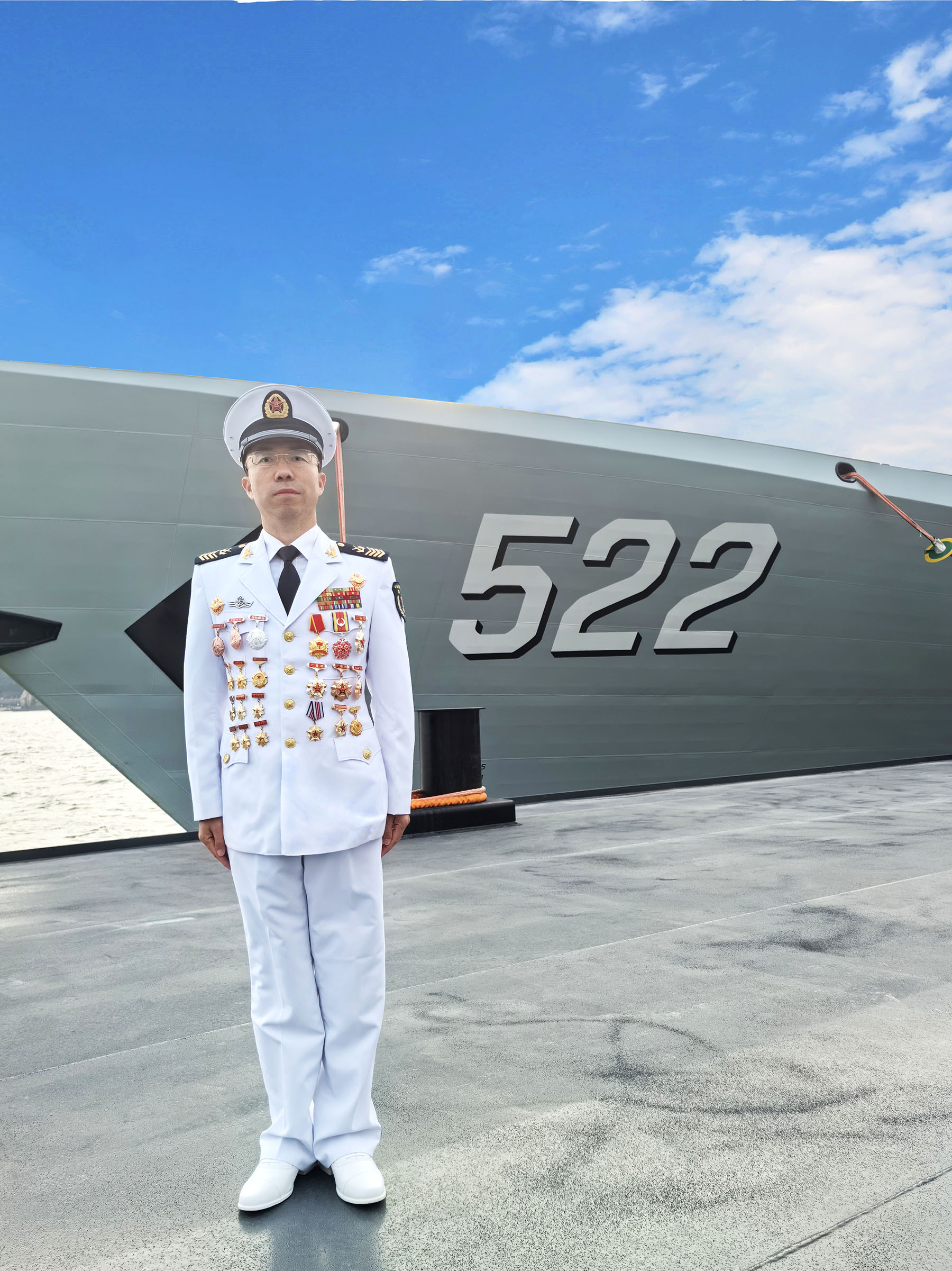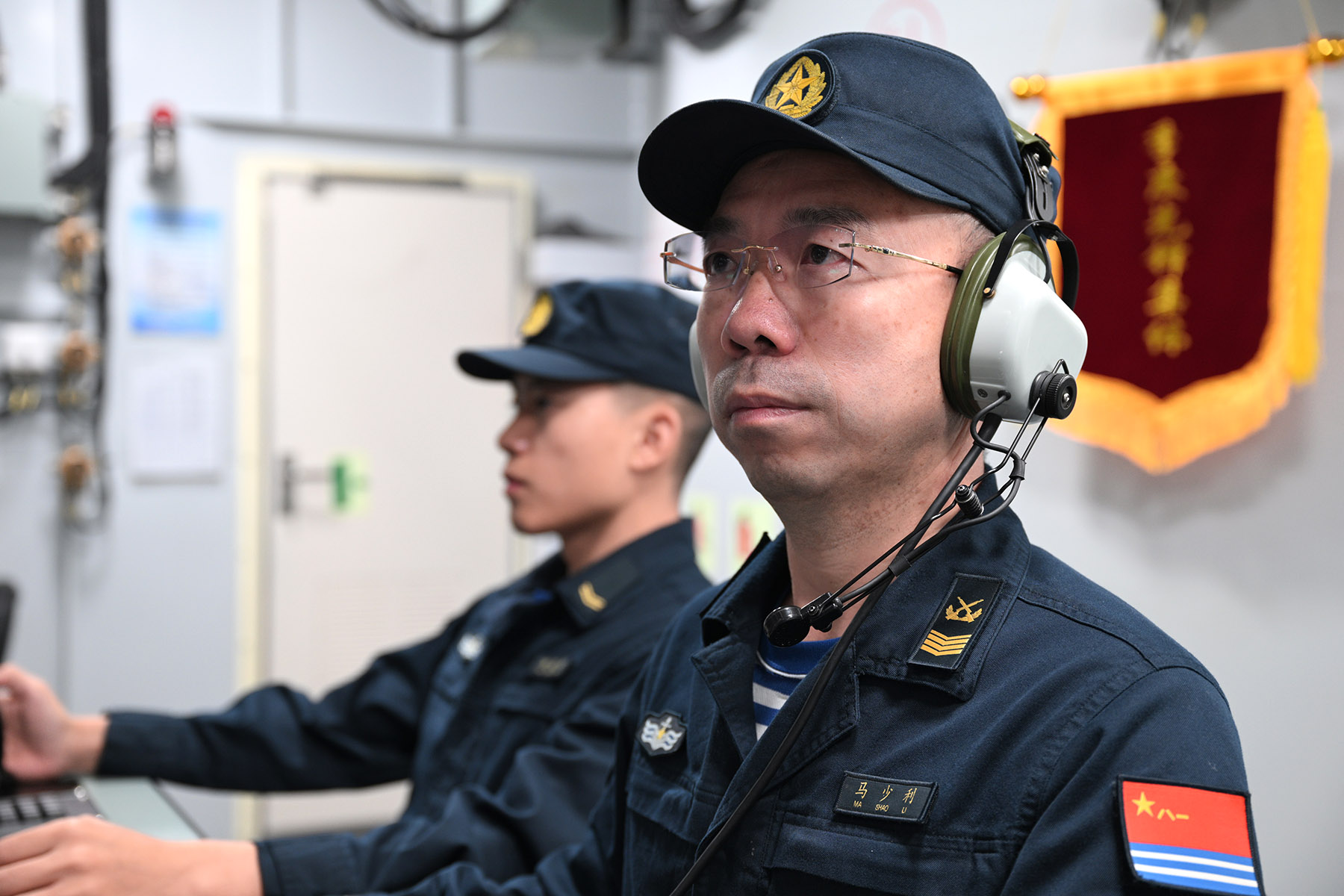Ma Shaoli's determination results in mastery of artillery at sea

Editor's note: The Publicity Department of the Communist Party of China Central Committee and the Political Work Department of the Central Military Commission have awarded the "most beautiful revolutionary soldiers of the new era" designation every year since 2021, honoring dedicated personnel in China's armed services. In July, 12 more service members were awarded this title. Here are the stories of two of them.
As one of the 12 recipients of this year's "most beautiful revolutionary soldiers of the new era" designation awarded in July, Ma Shaoli remains humble.
The exemplary naval officer has grown from being a poor rural boy to a walking encyclopedia of naval artillery.
As a command master chief petty officer aboard frigate CNS Ziyang in the People's Liberation Army Navy, Ma has devoted 27 years to mastering his craft, embodying the modern soldier's excellence and dedication.
"I don't have any special talent. Just years of hard work," Ma said.
During exercises at sea in recent years, a sudden alarm shattered the calm, forcing Ma into action. Onboard the warship, he rushed to his battle station, swiftly carrying out the steps to aim, lock and fire. In an instant, flames burst from the barrel as shells thundered forward, striking their targets with accuracy.
The deftness of his dedication and how it rubs off on those around him is what makes Ma stand out.

Ma's path to mastering the main gun was not smooth. When he joined the Navy at 18, he was assigned as an anti-aircraft machine gunner on a missile frigate, missing out on the main gun position he truly desired. But his fascination with the main gun never faded. While excelling at his assigned duties, he quietly observed and studied the main gun crew at work.
"Why does the main gun crew often choose to operate manually instead of using electric firing?" he once asked after detailed observation. The main gun squad leader's reply was blunt: electric systems break down more frequently.
Ma realized that crews had developed the habit of relying on manual firing to avoid malfunctions, which, however, was at the cost of range and precision. "Equipment is like a baby that can't talk. You have to care for it and learn its language," Ma said.
Driven by determination, he pestered the gun crew for lessons, studied operating procedures, and managed to obtain an electrical schematic for the main gun system. He traced the wiring and took notes, filling a whole notebook. After a year of study, he successfully transferred to the main gun post.
His breakthrough came during a live-fire test while the section leader was on leave. Ma convinced the ship's captain to try electric firing, vowing to take full responsibility for any issues.
The results were unprecedented: eight direct hits in one test, compared to the unit's usual struggle to score even one. His name quickly became known throughout the fleet, and the ship formally adopted electric firing.
From that point on, Ma immersed himself in technical manuals and schematics, gradually mastering the structure and principles of various naval gun models. His meticulous maintenance work sharply reduced malfunction rates, transforming him from a novice into a recognized expert.

In 2017, Ma became the chief of the gun section on a newly commissioned warship. Less than a year later, the crew entered a competitive live-fire contest.
Ma led his team through basic tasks, including checking ammunition, cleaning barrels, disassembling and inspecting mechanical parts, testing every electrical wire, and analyzing the trajectory of each shell. Under his leadership, his team achieved a first-round hit and won first place among all competing vessels.
Over his 27 years in the Navy, Ma has operated six types of naval artillery on four types of ships, recording every maintenance session, compiling over 150,000 words of notes and more than 400,000 data entries.
Rooted in repeated real-world exercises, Ma said, "On the battlefield, the gun is me, and I am the gun."
He analyzed every live round fired, studying ship sway, the expansion speed of propellant gases, and how wind conditions alter a shell's trajectory. His research has consistently improved first-hit rates and overall gun performance.
ALSO READ: Meet the men who give nation's aircraft carriers a cutting edge
For Ma, true strength lies in the team. As the unit's top gunnery specialist, he shares his knowledge freely, mentoring not only his own shipmates but also personnel from other vessels, naval academies and equipment factories.
"What happens to these skills if I fall in battle or retire?" he said. Determined to ensure the knowledge is passed down, he set out to compile a professional textbook tailored for naval gun crews, which gained support from his unit.
Ma has spent over 700 days studying with experts, visiting factories and mastering design software. Often working late into the night, he damaged his eyesight, but the effort paid off when his work was adopted as a standard Navy training manual.
Over more than two decades as a section leader, he has cultivated numerous technical talent, many of whom have risen to positions such as ship captains or senior petty officers.
Liu Lipeng contributed to this story.
Contact the writer at lishangyi@chinadaily.com.cn


